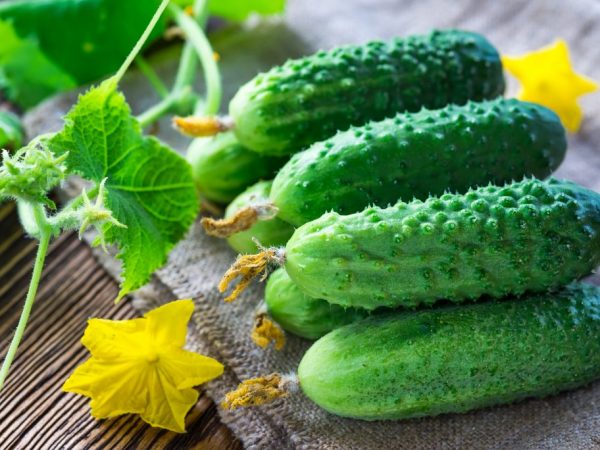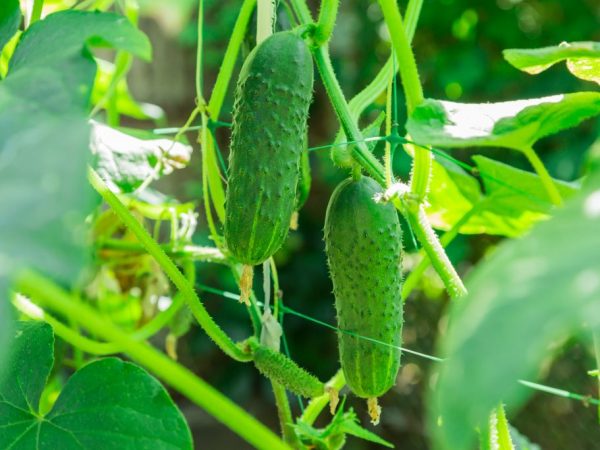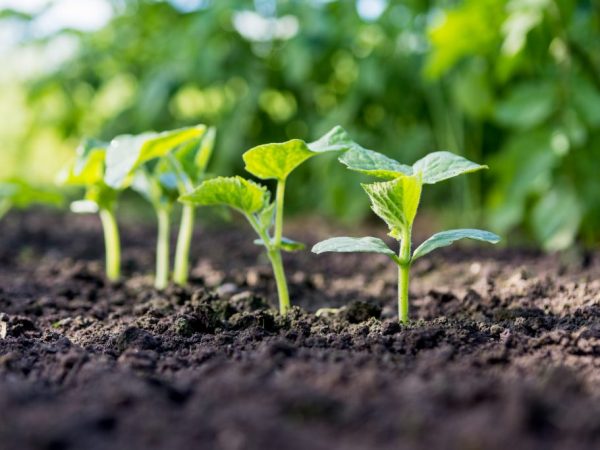Description of the Ekol cucumber variety
The Ekol cucumber variety is a versatile crop. It is perfect for preserving and preparing salads. Not so long ago, the hybrid that was bred can be grown in the open field, and in the second circle in greenhouse conditions.

Description of the Ekol cucumber variety
Variety characteristics
The Ekol f1 varietal cucumber was bred by the Syngenta Seeds company, which is engaged in breeding work on the development of new varieties of seeds. The first tests of the variety took place in 2001, and already in 2007 it was entered into the register. Seeds of hybrids are obtained in the first generation from crossing 2 species. Hybrid species take only the best performance from the parent varieties, so they are much better at resisting disease, producing more fruit and ripening faster than the parent species.
The qualitative characteristic of the species allows you to grow the Ekol f1 cucumber in almost any conditions. It takes root well in the open field and is great for growing in greenhouses and greenhouses. Parthenocapic variety that does not require insect pollination. Refers to mid-early high-yielding varieties, the ripening time of fruits is 42-45 days from the moment the first shoots appear. From 1 hectare, you can collect 12 tons of excellent greens.
Description of the bush
The bushes are medium-sized, their height varies within 2.5-3 m. The internodes are short, due to which the plants weave, mainly upward, and practically do not grow to the sides. The deciduous part has a dark green tint. Leaves are medium sized and small. There are more female flowers in the inflorescences.
Bouquet-type flowering. In 1 node, 3-4 fruits are obtained.
Description of fruits
- length from 4 to 10 cm;
- weight 95 g;
- cylindrical shape;
- the structure is bumpy, with dense white spines;
- thin skin of dark green color;
- the pulp is tender, gives off a pleasant aroma, crunchy;
- the taste is sweetish, without bitterness.
Advantages and disadvantages
Ekol f1 cucumbers are especially popular with farmers. Their main advantages are:
- early maturity;
- high productivity;
- the versatility of the fruit in terms of use;
- good taste;
- lack of bitterness;
- shade tolerance;
- disease resistance.

Overripe fruits lose their taste
One of the main disadvantages is the inability to propagate the variety on your own. Self-pollinated F1 hybrid will give seeds, but they are not suitable for growing, so you will have to buy them again every time. In addition, if the harvest is late, the greens acquire an unpleasant taste. The culture is susceptible to peronosporosis.
Growing
Planting methods
Planting cucumbers is carried out in two ways:
- seedling;
- by sowing seeds directly into the ground.
Growing cucumbers has its own characteristics. The soil must be warm, otherwise the plants will die. This applies to both cultivation methods. The optimum soil temperature should be 15 ℃.In open areas, it is important to follow the rules of crop rotation.
The preceding crops can be: potatoes, onions, legumes, cabbage, bell peppers. Medium loamy soils are great for cultivation. The site must be well lit and protected from drafts. In the greenhouse, it is necessary to organize good ventilation in order to avoid the spread of fungal diseases.
When growing by seedling, it is important to remember that picking is stressful for cucumber crops. The recommended time is mid-April, picking is carried out when 3-4 true leaves appear, this is about 30 days after sowing the seeds. Planting with a seedless method is carried out in mid-May, when the soil is completely warmed up.
Seed preparation
Seeds should be pre-soaked in warm water with potassium permanganate. You can also use growth accelerators such as Nitrofoski or Zircon. Then the seeds are put on wet cheesecloth and spilled with warm water.
In this state, the seed is left for a day. When they are germinated, you can plant them in pots or open ground. Only the timing of planting and soil preparation will differ.
Soil preparation
For planting by the seedling method, it is recommended that the soil be pre-calcined in the oven in order to get rid of the larvae of pests and fungal spores. The soil mixture is made from peat, sawdust, deciduous humus and fertile soil. The soil in the garden or in the greenhouse begins to be prepared in the autumn.
The most important thing is to remove tops and weeds, especially if re-growing in a greenhouse or greenhouse is practiced. In greenhouse conditions, it is recommended to remove the top layer of the soil altogether. The soil should be dug onto a shovel bayonet. Then organic fertilizers are applied.
It is recommended to warm up the soil before planting. Horse manure is an excellent option for this. It is applied 21 days before planting so that the seeds or roots of the seedlings do not burn out. The use of horse manure allows you to warm up the soil and get rid of harmful microorganisms. An alternative to horse manure is bird droppings. It should be applied 2 weeks before planting the seeds.
Immediately before planting, in an open area or in a greenhouse, you should dig up the soil again and add organic matter. Spill the soil with warm water. The soil should be moist and well fertilized. This will help the dived sprouts to quickly adapt to the new location.
Landing

Seedlings must be hardened before picking.
Seeds in open ground or in a greenhouse are sown to a depth of 3 cm with a step of 15-20 cm. A space of 65 cm is left between the rows. It is advisable to cover the plantings with a film before the first shoots appear.
When propagating by seedling, the seeds are sown to a depth of 1.5 cm. It is advisable to immediately plant them in separate glasses in order to less injure the plants with dives. After planting, they are covered with foil and placed on a warm, illuminated windowsill. When shoots appear, the film is removed and after a month the plants are transplanted into open ground or a greenhouse.
The main thing is to harden the seedlings before picking. To do this, in the warm time of the day, it is put on the balcony or the temperature in the room is artificially reduced. After planting in the ground, you can mulch the space around the stem with sawdust to retain moisture and heat.
Care
The Ekol cucumber is not afraid of extreme growing conditions, however, in order to get a good harvest, you need to provide the plants with proper care. Cucumbers love moisture. They only need to be watered with warm water. It is not advisable to pour the liquid directly under the bush. It is better to make small furrows near the holes for irrigation.
Organic fertilizing should be carried out during the growing season and during flowering. It is undesirable to use pure manure, mullein or bird droppings. Organics need to be diluted with water and water the bushes.A solution of wood ash can be an excellent fertilizer.
Caring for cucumbers involves frequent loosening. This helps to improve soil aeration and prevent moisture stagnation. Cultivation is carried out after watering. To increase the yield, it is necessary to carry out pinching of the ovaries of the sinuses. On each stem, 6 sinuses in the lower part should be blinded.
This method helps to strengthen the rhizome and prevents the development of fungal diseases. Proper care involves the installation of plant supports. This also allows you to significantly increase yields and is a preventive measure against fungi, which quickly begin to multiply when the ground part of the plant comes into contact with the soil.
Diseases and pests
Although the Ekol cucumber variety is considered disease-resistant, it can be affected by downy mildew, white rot, and tobacco mosaic. As a prophylaxis and treatment, spraying with copper sulfate, Bordeaux liquid or mullein solution is used. The affected areas of plants must be removed immediately to avoid spreading to neighboring bushes. The main cause of diseases is high humidity or improper care, non-compliance with the rules of crop rotation.
Of the pests, the main enemies of Ekol cucumbers are:
- whitefly: they fight the pest with the help of soapy water and sticky traps, prevention is the observance of the rules of crop rotation, the introduction of manure into the soil;
- spider mite: when pests appear, the bushes are treated with pepper infusion;
- melon aphid: fight insects with karbofos solution.
Final part
The description of the qualitative characteristics of the Ekol cucumber makes it possible to rank it as one of the best hybrid varieties. This versatile crop is perfect for growing in all climatic zones and for preparing all kinds of culinary delights. The main feature of the species is the absence of bitterness.
The plant responds well to fertilizing, loosening the soil and high soil moisture. In arid conditions, greens do not fall from the bushes, like other varieties. The only drawback is the inability to propagate plants from seeds on your own.


